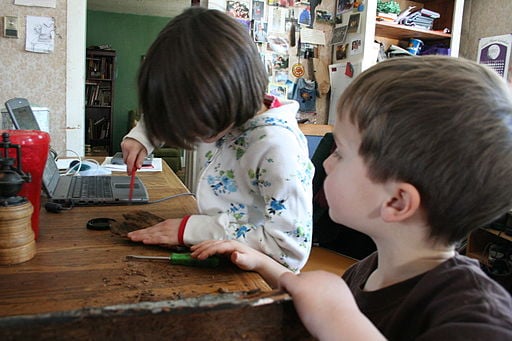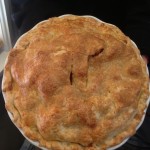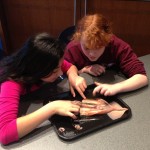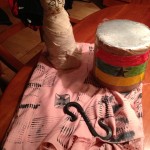On our first visit to the MFA two weeks ago, Jake asked the boys, “Do you know the three rules of an art museum?”
Ezra responded quickly and exuberantly. “No violence!”
“OK – four rules,” Jake replied while laughing.
I don’t know what kind of kids Jake normally gets at the museum, but for my boys No Violence has to be at the top of the rule list. They just can’t keep their hands off of each other. They sleep in a tangle of legs and arms many nights. If there are five square feet somewhere, they manage to turn them into a wrestling ring. Sometimes, though, someone pushes a little too hard and all of that physicality turns ugly, with lots of tears, bruises, and accusations. And if Ezra is the least bit upset with Zach, he scratches, kicks, and hits.
According to Ellen Galinsky, in Mind in the Making, what my boys need is help with perspective taking, the second on her list of Seven Essential Life Skills. She writes that for twenty years, educators believed that to reduce aggression in school-aged children they should teach problem-solving skills. Instead, new research indicates that the far more effective way to reduce aggression is to promote perspective taking.
Even if your kids don’t beat the crud out of each other on a regular basis, you’ll want to promote perspective taking. It’s been shown to predict better transition into kindergarten, better reading skills, and better pro-social behavior.
When we talk about perspective taking, we are not talking about a fuzzy kind of empathy, although I would take more of that from the boys. We are talking about the executive functions of inhibiting our own thoughts and feelings to take on those of others;the cognitive flexibility to see things in more than one way; and the ability to reflect on the differences and similarities between our perspective and that of others.
One of Galinsky’s suggestions to improve perspective taking is to undertake lots of pretend play and discussions of how characters are feeling at points in the story.
Charlotte Mason, whose century-old works I’m reading along with Galinsky’s, doesn’t talk about perspective taking. Instead, she writes a lot about imagination, and I think it applies here.
Imaginary tales have more use than just amusing children. It would be tragic if future generations had no creative imagination. They would be less likely to conceive of great ideas and do heroic deeds. It is only when we can let a person or cause fill us so much that even our own self-interest is pushed aside that we are able to make great sacrifices and do great things for that person or cause.
Mason believed in reading great books, both fiction and non-fiction, to kids — books far more difficult than they were capable of reading themselves. These books would make history and peoples and ideas come alive. If children don’t imagine what it was like to live in the times they read about in history, or feel familiar with the places described in geography, then their lessons aren’t doing their job.
I’ll admit that I haven’t done the best job with habit/skill when it comes to our homeschool. But I’m gonna try to bump it up a notch.
For the last couple of days, we’ve built and started to fill in a giant timeline that covers the last 10,000 years of Chinese history. We are spending the next week on 221BC, when the first emperor ruled China. So tomorrow, I am going to take out the terra cotta soldiers we bought in Xi’an last summer and have the boys stage a play. And I’ll encourage them to tell me what everyone is thinking and feeling during the long battles and bloody rule and burial preparations.
Do you think that is likely to reduce the violence in our house?











